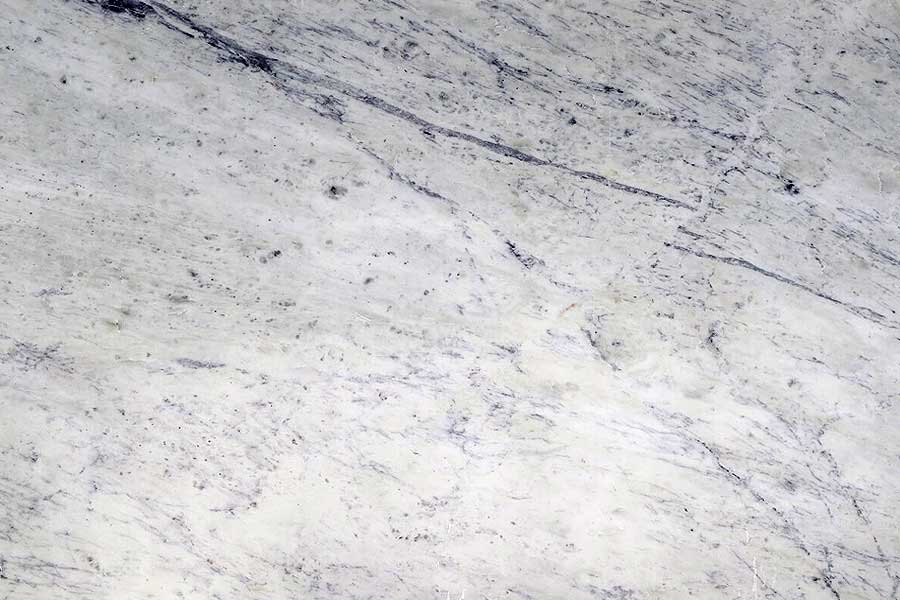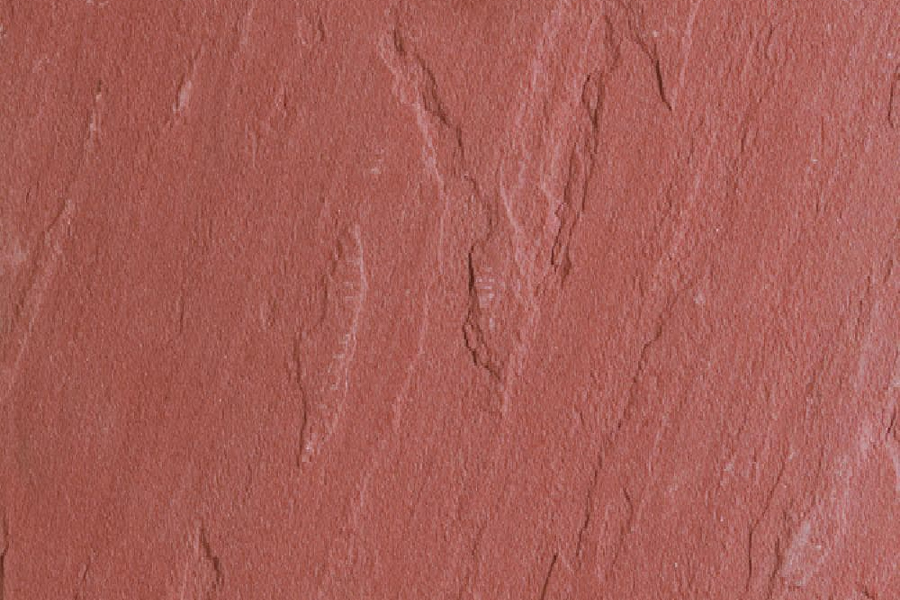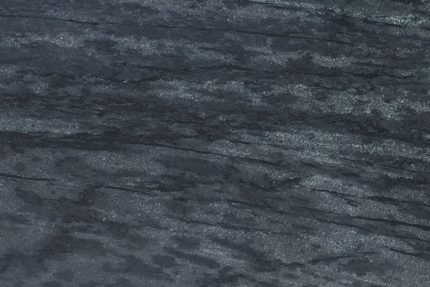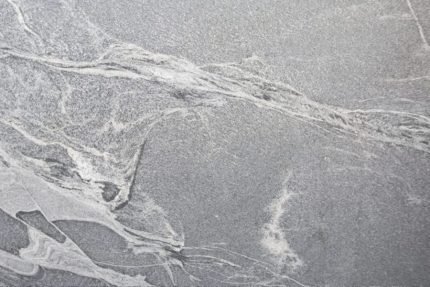Light Grey Slatestone
Light Grey Slatestone is a fine-grained metamorphic rock that shows no obvious compositional layering, but can easily be split into thin slabs and plates. It is usually formed by low-grade regional metamorphism of mudrock. This is in contrast to the silky cleaved surfaces of phyllite, which is the next higher grade of metamorphic rock derived from mudstone. The direction of cleavage is independent of any sedimentary structures in the original mudrock, reflecting instead the direction of regional compression.
Marine Black Slatestone
Marine Black Slatestone is a fine-grained metamorphic rock that shows no obvious compositional layering, but can easily be split into thin slabs and plates. It is usually formed by low-grade regional metamorphism of mudrock. This is in contrast to the silky cleaved surfaces of phyllite, which is the next higher grade of metamorphic rock derived from mudstone. The direction of cleavage is independent of any sedimentary structures in the original mudrock, reflecting instead the direction of regional compression.
Midnight Slatestone
Midnight Slatestone is a fine-grained metamorphic rock that shows no obvious compositional layering, but can easily be split into thin slabs and plates. It is usually formed by low-grade regional metamorphism of mudrock. This is in contrast to the silky cleaved surfaces of phyllite, which is the next higher grade of metamorphic rock derived from mudstone. The direction of cleavage is independent of any sedimentary structures in the original mudrock, reflecting instead the direction of regional compression.
Night Blizzard Black Slatestone
Night Blizzard Black Slatestone is a fine-grained metamorphic rock that shows no obvious compositional layering, but can easily be split into thin slabs and plates. It is usually formed by low-grade regional metamorphism of mudrock. This is in contrast to the silky cleaved surfaces of phyllite, which is the next higher grade of metamorphic rock derived from mudstone. The direction of cleavage is independent of any sedimentary structures in the original mudrock, reflecting instead the direction of regional compression.
Oreo Black Slatestone
Oreo Black Slatestone is a fine-grained metamorphic rock that shows no obvious compositional layering, but can easily be split into thin slabs and plates. It is usually formed by low-grade regional metamorphism of mudrock. This is in contrast to the silky cleaved surfaces of phyllite, which is the next higher grade of metamorphic rock derived from mudstone. The direction of cleavage is independent of any sedimentary structures in the original mudrock, reflecting instead the direction of regional compression.
Sabon Slatestone
Sabon Slatestone is a fine-grained metamorphic rock that shows no obvious compositional layering, but can easily be split into thin slabs and plates. It is usually formed by low-grade regional metamorphism of mudrock. This is in contrast to the silky cleaved surfaces of phyllite, which is the next higher grade of metamorphic rock derived from mudstone. The direction of cleavage is independent of any sedimentary structures in the original mudrock, reflecting instead the direction of regional compression.
Sea Pearl Slatestone
Sea Pearl Slatestone is a fine-grained metamorphic rock that shows no obvious compositional layering, but can easily be split into thin slabs and plates. It is usually formed by low-grade regional metamorphism of mudrock. This is in contrast to the silky cleaved surfaces of phyllite, which is the next higher grade of metamorphic rock derived from mudstone. The direction of cleavage is independent of any sedimentary structures in the original mudrock, reflecting instead the direction of regional compression.
Silver Grey Slatestone
Silver Grey Slatestone is a fine-grained metamorphic rock that shows no obvious compositional layering, but can easily be split into thin slabs and plates. It is usually formed by low-grade regional metamorphism of mudrock. This is in contrast to the silky cleaved surfaces of phyllite, which is the next higher grade of metamorphic rock derived from mudstone. The direction of cleavage is independent of any sedimentary structures in the original mudrock, reflecting instead the direction of regional compression.
Silver Slatestone
Silver Slatestone is a fine-grained metamorphic rock that shows no obvious compositional layering, but can easily be split into thin slabs and plates. It is usually formed by low-grade regional metamorphism of mudrock. This is in contrast to the silky cleaved surfaces of phyllite, which is the next higher grade of metamorphic rock derived from mudstone. The direction of cleavage is independent of any sedimentary structures in the original mudrock, reflecting instead the direction of regional compression.
Valentino Slatestone
Valentino Slatestone is a fine-grained metamorphic rock that shows no obvious compositional layering, but can easily be split into thin slabs and plates. It is usually formed by low-grade regional metamorphism of mudrock. This is in contrast to the silky cleaved surfaces of phyllite, which is the next higher grade of metamorphic rock derived from mudstone. The direction of cleavage is independent of any sedimentary structures in the original mudrock, reflecting instead the direction of regional compression.
White Brushed Slatestone
White Brushed Slatestone is a fine-grained metamorphic rock that shows no obvious compositional layering, but can easily be split into thin slabs and plates. It is usually formed by low-grade regional metamorphism of mudrock. This is in contrast to the silky cleaved surfaces of phyllite, which is the next higher grade of metamorphic rock derived from mudstone. The direction of cleavage is independent of any sedimentary structures in the original mudrock, reflecting instead the direction of regional compression.
White Grey Slatestone
White Grey Slatestone is a fine-grained metamorphic rock that shows no obvious compositional layering, but can easily be split into thin slabs and plates. It is usually formed by low-grade regional metamorphism of mudrock. This is in contrast to the silky cleaved surfaces of phyllite, which is the next higher grade of metamorphic rock derived from mudstone. The direction of cleavage is independent of any sedimentary structures in the original mudrock, reflecting instead the direction of regional compression.




























